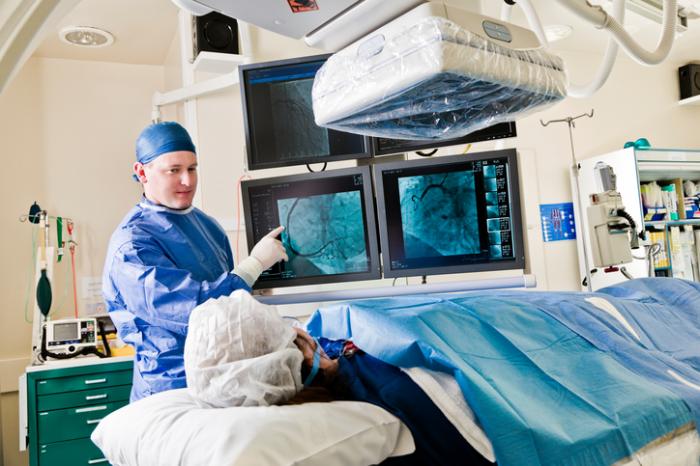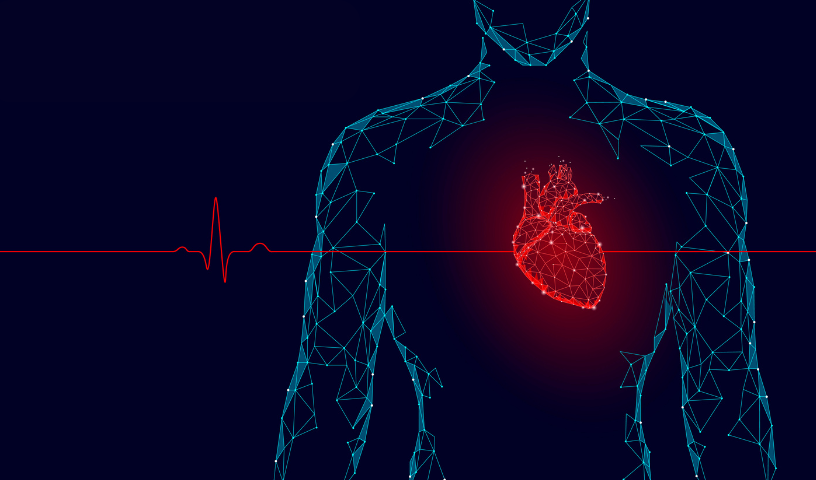Cardiology Jupiter’s healthy meal ideas for cardiac wellness
Cardiology Jupiter’s healthy meal ideas for cardiac wellness
Blog Article
Comprehending the Relevance of Cardiology in Modern Healthcare Solutions
Cardiology plays an essential function in modern healthcare, specifically as heart illness remains to be the leading reason of mortality worldwide. Advances in diagnostics and therapy have actually transformed patient treatment, making it possible for earlier treatments and improved outcomes. The shift towards precautionary cardiology empowers individuals to manage their health proactively. As innovation remains to progress, the integration of innovative services may further redefine cardiology's impact on public wellness, triggering a more detailed assessment of emerging fads and their effects.
The Occurrence of Heart Illness and Its Influence On Public Health And Wellness
Although cardiovascular disease remains the leading cause of fatality around the world, its impact expands far beyond specific clients to affect public health and wellness systems and economic climates. The high prevalence of cardiovascular disease puts a substantial strain on health care sources, requiring increased financing for therapy, recovery, and prevention programs. Public wellness initiatives need to deal with threat aspects such as excessive weight, cigarette smoking, and inactive way of lives, which contribute greatly to the climbing occurrence of heart conditions.Moreover, the financial worry connected with heart condition is enormous, including not only direct medical expenses yet additionally indirect expenses connected to shed performance and early mortality. Areas encounter obstacles in managing these expenses, frequently causing differences in medical care accessibility and results. As the populace ages and lifestyle-related risks remain to escalate, the necessity for efficient cardiology interventions ends up being vital. Dealing with heart disease is not just an issue of private health and wellness but likewise an essential public health and wellness priority.
Advances in Heart Diagnostics and Imaging Techniques
Current improvements in cardiac diagnostics and imaging strategies have actually revolutionized the area of cardiology, boosting the capacity to check and find cardiovascular disease. Techniques such as cardiac MRI, CT angiography, and echocardiography have ended up being significantly sophisticated, supplying detailed pictures of cardiac frameworks and features. These modalities permit for the very early recognition of problems like coronary artery condition, cardiac arrest, and valvular disorders.Moreover, improvements in non-invasive diagnostics, such as wearable innovation and remote surveillance tools, have actually equipped people and medical care carriers. These devices facilitate real-time tracking of heart rhythms and other vital indicators, bring about timely treatments. In addition, fabricated intelligence is being integrated into imaging analysis, enhancing precision and performance in medical diagnosis.
Developments in Therapy Options for Heart Issues
Recent innovations in cardiology have actually resulted in considerable advancements in treatment alternatives for heart disease. These include advanced surgical techniques that enhance step-by-step outcomes and emerging drugs that offer brand-new methods for therapy. As the field advances, these advancements play a vital role in enhancing patient care and end results.
Advanced Surgical Techniques
Developments in surgical methods have actually transformed the landscape of cardiology, supplying brand-new hope for patients with heart disease. Minimally invasive procedures, such as catheter-based interventions, have actually considerably reduced recuperation times and health center keeps. Techniques like robotic-assisted surgical procedure boost accuracy, permitting surgeons to browse complicated physiological structures with higher accuracy. Improvements in imaging innovation promote real-time visualization throughout treatments, boosting end results. Transcatheter aortic shutoff replacement (TAVR) exhibits a breakthrough in dealing with aortic constriction, enabling shutoff replacement without open-heart surgery. Additionally, hybrid methods that incorporate catheter-based and surgical techniques provide tailored solutions for various heart problems. These advanced medical techniques not only enhance client safety and security yet likewise increase treatment alternatives, highlighting the important duty of advancement in modern cardiology techniques.
Arising Medicines and Therapies
As the landscape of cardiology continues to advance, arising medicines and therapies play a pivotal role in enhancing therapy alternatives for heart conditions. Advancements such as novel anticoagulants and progressed lipid-lowering representatives have transformed the administration of cardiovascular conditions, significantly minimizing person morbidity and mortality. Furthermore, the advancement of gene therapies and regenerative medication provides encouraging avenues for dealing with problems previously deemed irreparable. Professional trials are constantly revealing the efficacy of these treatments, pressing the limits of typical treatments. The combination of electronic health modern technologies promotes customized medication, permitting for tailored treatment plans based on hereditary and lifestyle factors. Collectively, these improvements underscore the dynamic nature of cardiology, boosting patient end results and redefining standards of treatment in contemporary medical care.
The Duty of Preventive Cardiology in Patient Treatment
Precautionary cardiology plays an essential role in client treatment by focusing on the recognition of threat variables that add to heart condition. Through way of living alteration approaches and very early discovery strategies, medical care carriers can successfully reduce the occurrence of cardio occasions - Cardiology. This proactive approach not only improves person outcomes however also promotes lasting wellness
Risk Factor Recognition
While heart diseases remain a leading reason for morbidity and mortality worldwide, reliable threat aspect recognition acts as a keystone of precautionary cardiology. Recognizing danger elements such as hypertension, household, hyperlipidemia, and diabetes mellitus history is important for early treatment. Health care professionals use different screening techniques to evaluate these aspects, permitting for customized precautionary procedures. In addition, understanding an individual's way of life choices, such as cigarette smoking and physical inactivity, further notifies risk analyses. This thorough analysis makes it possible for clinicians to develop customized care plans focused on mitigating threats. By focusing on risk factor identification, medical care systems can enhance patient end results and reduce the general worry of heart diseases, inevitably adding to improved public health and wellness techniques and source allocation.
Way Of Living Modification Techniques
A wide variety of research studies highlights the important role of way of living alteration techniques in minimizing cardiovascular disease threat. These approaches incorporate dietary modifications, raised physical activity, smoking cigarettes cessation, and weight management. By embracing a heart-healthy diet plan abundant in fruits, veggies, entire grains, and lean healthy proteins, people can decrease cholesterol levels and blood stress. Regular physical activity reinforces the heart and improves general cardio health. Additionally, quitting cigarette smoking substantially minimizes the threat of heart disease and improves recuperation rates for those with current conditions. Weight management even more adds to cardiovascular health by mitigating various other danger factors such as diabetes and hypertension. Implementing these way of living changes not just advertises specific well-being however likewise functions as a foundation of preventive cardiology in client treatment.
Very Early Discovery Methods
Lifestyle alterations considerably contribute to reducing cardio disease threats, however they are most effective when combined with very early detection strategies. Preventive cardiology highlights the significance of recognizing prospective heart problems prior to they escalate into major conditions. Strategies such as high blood pressure surveillance, cholesterol testing, and progressed imaging modern technologies like echocardiograms play crucial duties in evaluating browse around here cardiovascular wellness. Biomarkers and genetic testing likewise boost the precision of very early detection, permitting customized precautionary methods. Routine heart risk analyses encourage doctor to interfere proactively, possibly protecting against cardiovascular disease and strokes (Cardiology care). By incorporating these very early discovery approaches into routine treatment, patients can benefit from prompt way of living treatments and targeted treatments, inevitably enhancing and enhancing results high quality of life
Integrating Innovation Into Cardiology Practices
As improvements in technology continue to reshape different fields, the assimilation of ingenious devices and systems into cardiology practices has ended up being crucial for improving patient care and end results. Telemedicine systems allow cardiologists to keep an eye on clients remotely, improving accessibility to care while minimizing the worry on medical care centers. Wearable gadgets, such as smartwatches, allow continual heart price monitoring, informing both doctors and individuals to prospective concerns in real-time. In addition, artificial intelligence (AI) is being utilized to evaluate vast quantities of heart information, assisting in early diagnosis and tailored treatment strategies. Advanced imaging methods, consisting of 3D echocardiography, enhance visualization of heart structures, bring about more specific interventions. Digital health and wellness documents (EHRs) enhance patient details monitoring, making sure that cardiologists have instant accessibility to crucial information. With each other, these technological improvements are transforming cardiology, advertising proactive administration and enhanced health and wellness outcomes for individuals with cardio conditions.
The Significance of Person Education And Learning and Interaction
Person education and interaction play an essential function in the administration of cardio wellness. By furnishing clients with expertise concerning their problems, therapy options, and way of living adjustments, doctor encourage people to take an active duty in their treatment. This positive approach can result in improved adherence to recommended drugs, nutritional changes, and workout routines, eventually lowering the risk of complications.Engagement additionally promotes a solid patient-provider partnership, encouraging open communication and depend on. When patients feel notified and from this source included, they are extra likely to voice problems and ask inquiries, which can cause much better scientific end results. Additionally, academic resources, such as workshops or digital systems, can boost understanding and advertise self-management strategies. On the whole, prioritizing individual education and learning and involvement is vital for enhancing cardiovascular health and wellness, improving lifestyle, and reducing health care costs related to cardiovascular illness.
Future Fads in Cardiology and Their Prospective Effect

Often Asked Questions
What Lifestyle Changes Can Reduce Heart Illness Risk?
The existing question addresses way of living changes that can greatly decrease heart problem risk. Cardiology Jupiter. Embracing a well balanced diet plan, engaging in normal physical activity, maintaining a healthy weight, managing stress, and staying clear of cigarette can significantly enhance cardiovascular health and wellness
Just How Can I Identify Very Early Signs of Heart Troubles?
Acknowledging very early signs of heart troubles includes monitoring signs such as upper body pain, lack of breath, tiredness, and uneven heart beat. Prompt awareness of these indications can motivate essential medical analysis and treatment for far better outcomes.
What Are the Distinctions In Between Cardiologists and Heart Surgeons?
The distinctions between cardiologists and cardiac cosmetic surgeons lie in their roles; cardiologists largely manage and detect heart disease through non-invasive techniques, while cardiac cosmetic surgeons execute surgeries to remedy architectural heart problems. Each plays a vital, distinctive duty.

How Typically Should I Obtain My Heart Health Checked?
The regularity of heart checkup differs based on private risk variables. Generally, grownups must undergo evaluations every one to two years, while those with status quo may require more frequent analyses as suggested by health care specialists.
What Role Does Genes Play in Heart Illness Risk?
Genetics substantially affects heart disease threat, with domestic patterns showing inherited conditions. Specific genetics can predispose individuals to hypertension, cholesterol problems, and various other cardiovascular issues, highlighting the significance of hereditary screening in reviewing heart health. Heart illness remains the leading cause of fatality globally, its effect expands far past individual clients to influence public health and wellness systems and economic climates. Public wellness campaigns should deal with danger factors such as obesity, smoking, and less active way of livings, which add considerably to the increasing incidence of heart conditions.Moreover, the financial burden linked with heart condition is immense, incorporating not just straight clinical prices but also indirect costs connected to lost performance and premature death. Preventive cardiology plays an important role in client care by concentrating on the recognition of risk elements that contribute to heart condition. Fabricated intelligence (AI) and maker understanding are enhancing diagnostics and individual surveillance, allowing early detection of heart illness. The differences in between cardiologists and heart cosmetic surgeons exist in their duties; cardiologists mostly diagnose and manage heart problems with non-invasive techniques, while heart surgeons perform medical procedures to remedy structural heart concerns.
Report this page